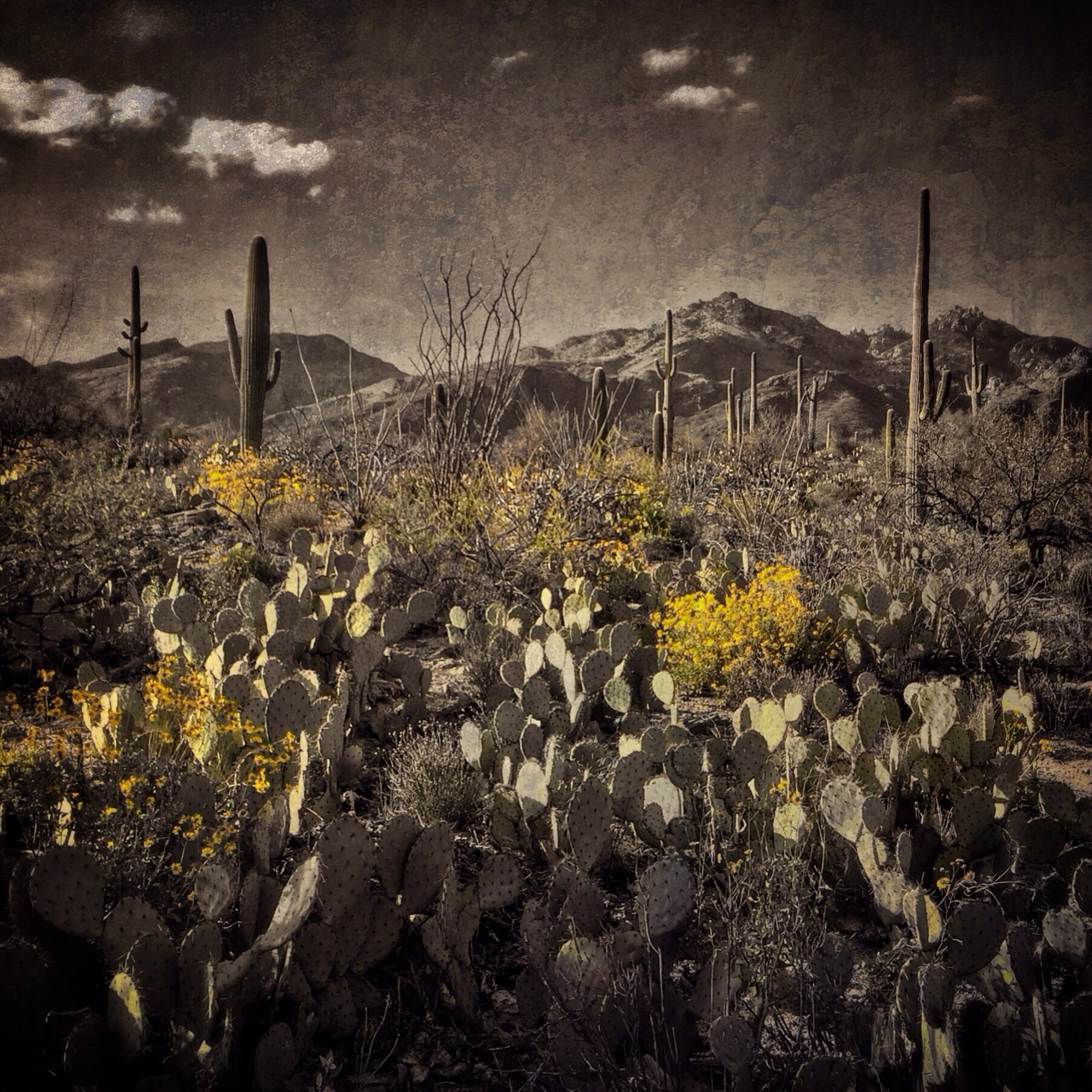(These photos taken with an iPhone5s)
On First Street, just east of downtown L.A.,
the iconic "Chop Suey Far East building,"
built in the 1890's,
and which served for much of the 20th century
as a hub for Little Tokyo's community
of Chinese and Japanese immigrants:
The distinctive arch and vintage neon sign, along with the street-front fire-escape-stairs make for a classic 20th-century American streetscape, and the Los Angeles City Hall (1920's) on the left adds to the sense-of-place...But the distortion caused by the angle from which I took this quick photo is distracting, and the sky looks washed out, since I wanted the exposure to show the building façades instead of the clouds.
So, first,
use the Perspective Correct App
to 're-set' the buildings as being perpendicular to the street:
Then, using "Tune Image" and a bit of the "HDR scape" tools
on snapseed,
the drama of lifting clouds
and the texture of the bricks
reappear:
My wife liked the cinematic feel of this color version, but I thought this would work as a black-and-white scene, with just the "chop suey" sign highlighted in color...
...and so for this, the ColorSplash app comes in handy:
But the sky was a bit grainy for my taste,
so using the BigLens app,
the sky can be selectively blurred:
And, finally, using Mextures, some faux-vintage texture and color add to the mood:

==============================
On the drive back to Tucson from L.A. we passed through a normally boring stretch of desert that's come to life with wildflowers. I've lived in Arizona for nearly seven years, and I've never seen such an expanse of globemallow in bloom--for several miles along I-10 to the west of Phoenix, this was the scene:
Bright afternoon sun 'bleaches' the scene,
so using snapseed again,
to crop and bring out the vibrancy of the blooms
by correcting the exposure,
I end up with this:
==============================
Back home, the foothills of the Santa Catalina Mountains
are dotted with brittlebush in bloom right now,
splashes of yellow on the saguaro-studded hills:

Taking this shot from close to ground level, however,
resulted in a slight distortion--
the saguaros are pointing 'outward'
away from the center of the photo.
So, using the above-mentioned
Perspective Correct, I end up with this:
This scene also lends itself to 'color-splashing,'
so first I used snapseed
to oversaturate the color (above),
then I used the 'color-splash' tool within the Laminar app
to keep the wildflowers yellow
while de-saturating everything else in the scene (below).
Finally, for the textures in the final image,
I used Mextures again,
before some final exposure-tweaking and vignetting in snapseed:
Spring in the Sonoran Desert...
So, from architecture to wildflowers, Perspective Correct
can be such a useful tool...
...and snapseed still remains my favorite 'go-to' tool.
The 'slap-on' filters available in so many apps and in so much of social media can be convenient, but if you want to get beyond the 'pre-fab' feeling you get when you use them for your photos, spend some time getting to know what you can do with an app like snapseed or Laminar. True, many apps are 'one-hit-wonders,' but even within those limited effects, there's so much potential customization available at your fingertips.













